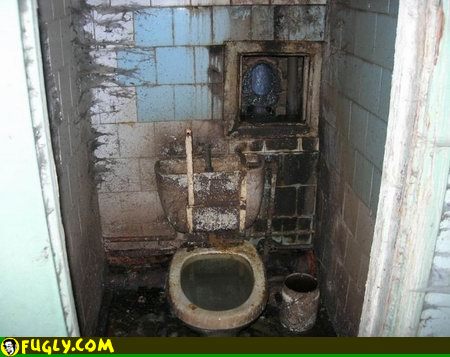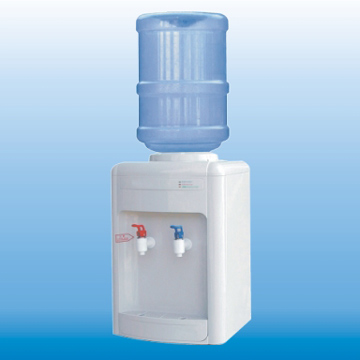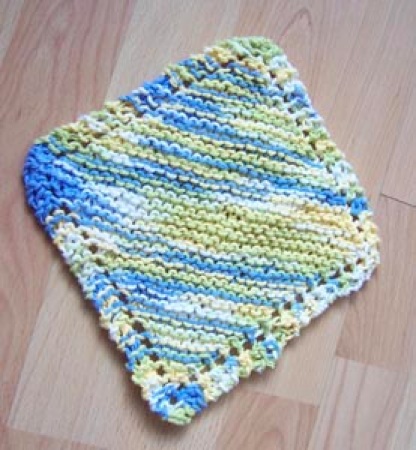I have a number of anecdotal studies going on whenever I go to the supermarket, a restaurant, a baby doctor, and other places.
When we go to a roadhouse-style restaurant, I often watch the servers clean the table with some sort of cloth, and I’ll ask, what is the cloth  cleaned with or soaked in? They usually point to some sorta sanitary solution, but aren’t too knowledgeable about how often it’s changed or cleaned. Same with those aprons the chefs are always wiping their hands on – I have dreams of large sample sizes.
cleaned with or soaked in? They usually point to some sorta sanitary solution, but aren’t too knowledgeable about how often it’s changed or cleaned. Same with those aprons the chefs are always wiping their hands on – I have dreams of large sample sizes.
The U.K. Health Protection Agency does have some resources so set about to sample those clothes used to wipe down tables in restaurants and takeaways and found they are often contaminated with E coli, listeria and other potentially dangerous bacteria.
The Guardian reports that cloths used to clean surfaces where food is prepared need to be changed regularly or thoroughly disinfected to prevent the growth of bacteria that can cause food poisoning.
HPA researchers sampled 133 cloths used for cleaning in 120 restaurants and takeaways in the north-east of England. They told the HPA’s annual conference at the University of Warwick today that 56% of the cloths contained unacceptable levels of bacteria. The most common were enterobacteriaceae (found on 86 cloths) E coli (21), Staphylococcus aureus (six) and listeria (five).
Only a third of restaurant kitchens (32%) were following the recommendation to use disposable cloths and change them regularly. The remainder had reusable cloths; in 15% of the kitchens, staff were unsure how often they were replaced.
John Harford, of the HPA’s food, water and environmental microbiology laboratory, said there was no reason to suppose restaurant kitchens in the north-east operated differently from those elsewhere in the country. He pointed to the potentially serious consequences for those eating food in or from such restaurants, adding,
"We have had certain outbreaks of food poisoning at a restaurant where we have isolated salmonella from the person who has eaten the meal and we have found salmonella on the cloth in the kitchen as well.”
While most restaurants disinfected their reusable cloths every 10 to 24 hours, a number of restaurants left it longer than 24 hours and some did not know how often their cloths were disinfected.


.jpg) Following reports of a small norovirus outbreak linked to the
Following reports of a small norovirus outbreak linked to the  countries worldwide that don’t have access to clean drinking water.
countries worldwide that don’t have access to clean drinking water. But what about on cruise ships?
But what about on cruise ships? Arkadiusz Choczaj, leader of the so-called "Clean Patrol" campaign, told reporters in Warsaw
Arkadiusz Choczaj, leader of the so-called "Clean Patrol" campaign, told reporters in Warsaw Amy has covered what to do if a student pukes in class
Amy has covered what to do if a student pukes in class
 Weese figures a bath is the best way to go (not the oven, right) and that anyone bathing a heavily contaminated animal should wear a mask and gloves, change their clothes after, clean any contaminated surfaces with bleach or another disinfectant and wash their hands.
Weese figures a bath is the best way to go (not the oven, right) and that anyone bathing a heavily contaminated animal should wear a mask and gloves, change their clothes after, clean any contaminated surfaces with bleach or another disinfectant and wash their hands. .jpg)
 Most people think they wash their hands and utensils properly while preparing food and that they cook meat and chicken thoroughly. The truth is, all too often, they don’t. This campaign is a powerful, visual reminder to consumers of the dangers of poor food safety behaviour, as they may often be unaware of how their day to day food preparation habits can cause themselves and others harm.
Most people think they wash their hands and utensils properly while preparing food and that they cook meat and chicken thoroughly. The truth is, all too often, they don’t. This campaign is a powerful, visual reminder to consumers of the dangers of poor food safety behaviour, as they may often be unaware of how their day to day food preparation habits can cause themselves and others harm. But, for those who work in an office, the water cooler is, I’m told, the place for gossip, flirting and bacteria.
But, for those who work in an office, the water cooler is, I’m told, the place for gossip, flirting and bacteria. The porous nature of dishcloths allow for the accumulation of small particles of food thereby providing a moist, wonderful environment for bacterial growth. Bacterial counts including mold and yeast recovered from such cloths have been amazing, not to mention the smell.
The porous nature of dishcloths allow for the accumulation of small particles of food thereby providing a moist, wonderful environment for bacterial growth. Bacterial counts including mold and yeast recovered from such cloths have been amazing, not to mention the smell.  As I was beginning the listening section of an introductory French exam today, several students suddenly jumped up. Desks were screeching and I thought there must have been a cockroach or mouse in the room (both things have happened to me in the past at other universities). But no. A student in the front row was only vomiting on the floor and some of his neighbors happened to get hit. The students were all very cool and helpful – getting water and paper towels for the sick classmate. I sent the sick one home but he cleaned up most of his mess. I notified administration, sprayed the floor with some chemical spray, wiped up, and directed the students to another classroom. I went and washed my hands and facilities came within the next 15 minutes to mop the floors.
As I was beginning the listening section of an introductory French exam today, several students suddenly jumped up. Desks were screeching and I thought there must have been a cockroach or mouse in the room (both things have happened to me in the past at other universities). But no. A student in the front row was only vomiting on the floor and some of his neighbors happened to get hit. The students were all very cool and helpful – getting water and paper towels for the sick classmate. I sent the sick one home but he cleaned up most of his mess. I notified administration, sprayed the floor with some chemical spray, wiped up, and directed the students to another classroom. I went and washed my hands and facilities came within the next 15 minutes to mop the floors.